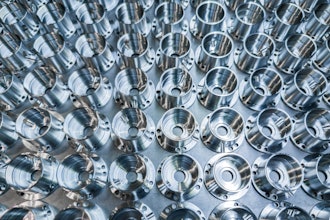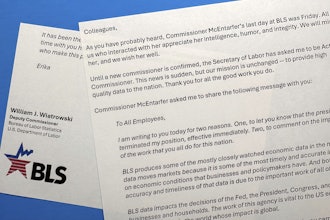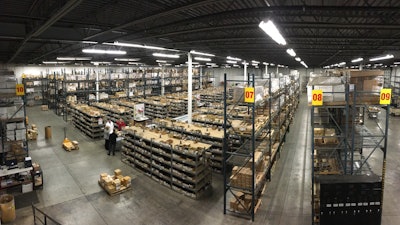
 ID's Big 50 COVID Update is sponsored by Epicor
ID's Big 50 COVID Update is sponsored by Epicor
While the vast majority of publicly-traded industrial distributors reported double-digit year-over-year sales gains for the July-September quarter — more than 20 percent for a handful on our Big 50 List — most of those losses were actually considerably less than the April-June quarter that was in thick of markets’ 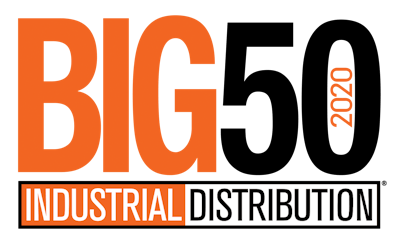
The encouraging sign in the industrial products market for our Big 50 distributors and some of their major industrial suppliers is that sequential sales and profits had solid gains over the summer compared to spring. Many distributors mentioned that month-to-month sales continued to consistently improve and regulate through the time they reported their latest quarterly results in October and early November.
Below, we’ve compiled recent commentary from distributors on our Big 50 List from their latest quarterly earnings releases and conference calls with industry analysts. This commentary addresses current demand trends that these distributors are seeing in the industrial products sector.
Grainger, No. 1

“On the non-pandemic side, sales have improved since bottoming out in April, with non-pandemic sales now down about 7 percent year-over-year. This improvement has been seen across most industries with some of the obvious industries remaining the furthest below their pre-pandemic levels. These include airlines, hotels and cruise lines. Based on month-to-date performance, we forecast October sales to finish up around 2 percent for the U.S. segment on continued trends in pandemic and non-pandemic performance.”
Motion Industries, No. 2

“Throughout the pandemic, our team has been executing on our growth strategy to further bolster Motion's leading competitive position in the MRO industry. We are focused on initiatives to expand our industrial services and solutions capabilities, enhance our pricing and category management strategy and optimize the effectiveness of our Motion Industries website, which we re-launched just last quarter. Each of these initiatives has added value for the company and our customers.”
Fastenal, No. 5

ID’s Insight: Fastenal shared its October sales information on Nov. 5, showing a reversal from a previous downward trend in daily sales and safety product sales over the summer. The company reported total October sales of $488 million, down 0.4 percent year-over-year, but factoring in an extra selling day in 2019, daily sales improved 4.1 percent YoY. Daily sales growth had steadily slowed from 9.5 percent in June to 2.2 percent in September.
As far as Fastenal’s October product mix, safety still dominated with 32.0 percent YoY growth. Like daily sales, safety had steadily slowed each month since peaking at 136.3 percent growth in May. That YoY safety sales growth figure had decelerated to 38.0 percent in July, 35.1 percent in August and 30.0 percent in September before bumping up to 32.0 percent growth in October. Meanwhile, sales of Fastenal's fastener products continue to regulate. After bottoming out at -22.5 percent in April, the company's fastener sales steadily improved to -7.5 percent by July to -4.7 percent in October. Fastener sales were at 5.0 and 7.0 percent YoY growth in January and February 2020, respectively, before the pandemic ramped up in March.
MRC Global, No. 7

“Our end-market diversity has been a positive and provides relative stability and growth compared to our peers. However, despite recent improvements, there's still substantial uncertainty in the broader market resulted in limited visibility. Given this, we continue to take aggressive measures to optimize our cost structure, reduce debt, and generate cash to better position the company for the ultimate recovery.”
Applied Industrial Technologies, No. 8

“We are starting to see greater maintenance activity and break/fix requirements with customers increasing access to their facilities and expanding equipment utilization as production gradually ramps back up, including at smaller local accounts. Feedback from our sales leaders suggest order sizes are increasing, customer inventory levels are being replenished and maintenance projects are getting authorized as businesses increase activity and new safety protocols support a productive passport.
“In addition, we saw several industry verticals return back to growth during the quarter, with 10 of our top 30 verticals up year-over-year versus only two last quarter. Areas such as food and beverage, aggregates, technology, chemicals and transportation were all showing positive momentum. And while weakness remains greatest across heavy industries such as machinery, metals and oil and gas, demand within these verticals appears to be stabilizing and improving slightly. We view these dynamics as a positive sign for the industrial economy and demand for our critical products and solutions.
“That said, the pace of end-market improvement remains gradual and at times inconsistent. Organic sales through our first 18 business days of October are down by mid-teens percent over the prior year.”
MSC Industrial Supply, No. 9

“In terms of end markets, the softness in industrial demand was broad based, with acute weakness in heavily metalworking centric end markets such as aerospace, oil and gas. There are some pockets of strength in certain areas, but not in our core end markets, which remains suppressed.
“We continue to hear that local distributors are suffering and the longer that the weak conditions persist, the more pressure they’re coming under. This continues to create market share capture opportunities and we’re focused on capitalizing on them.”
NOW Inc. (DistributionNOW), No. 10
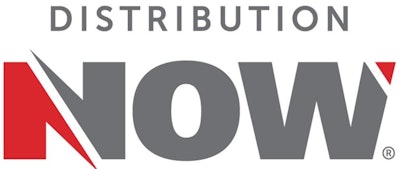
“Turning to the recent industry trends and activity, customers have reduced CapEx budgets and have adhered to disciplined austerity measures around maintenance as well as SG&A spending. As such, the exploration and production landscape is changing as evidenced by recently announced customer consolidations.”
DXP Enterprises, No. 16
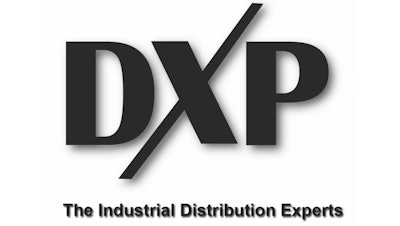
Systemax (dba Global Industrial), No. 19
CEO Barry Litwin in the company’s Q3 earnings release on Oct. 27: “Throughout the pandemic we anticipated where the market was heading, and were there for our customers when they needed us most. Customers that came to Global Industrial for pandemic supplies are seeing our wide assortment and are coming back to us for a broader range of needs. As a result, new customer acquisition has been healthy with strong growth in both e-commerce and our one-to-one managed sales channel. With an exceptional e-commerce centric platform and differentiated go to market strategy, we are building deeper and longer-term relationships with customers.”
Optimas Solutions, No. 20

Lawson Products, No. 31











